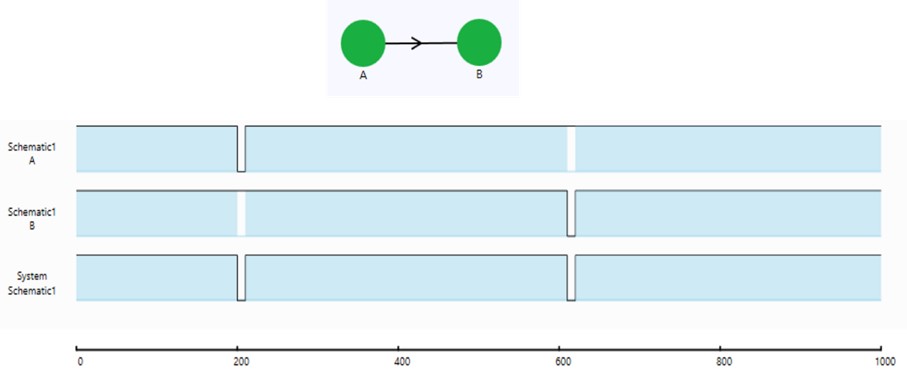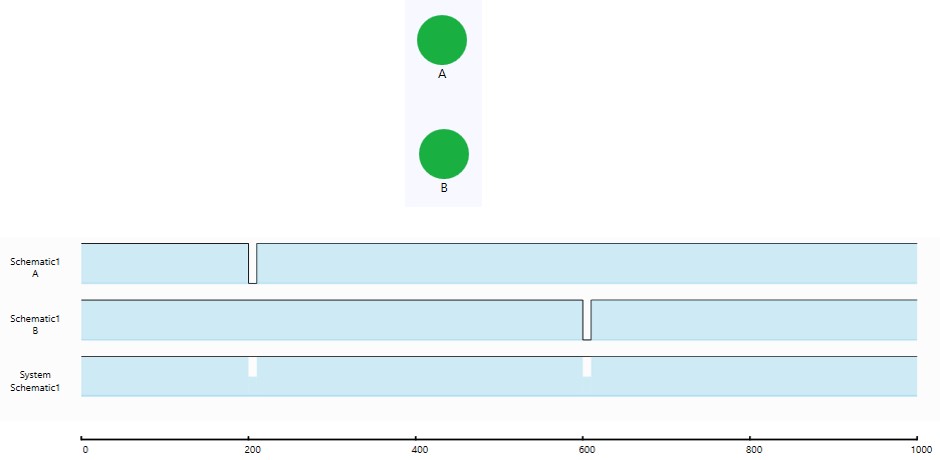System Availability is a common metric in RAM (Reliability, Availability and Maintainability) analysis. This article explains how Availability is calculated, highlights its limitations as a reliability metric, and introduces a more comprehensive alternative - Effectiveness.
Consider a system consisting of two equipment (A and B) in series, each with a production rate of 1 unit/hour. The ideal output over 1000 hours would be 1000 units, as illustrated in Figure 1 below.

Availability as a reliability metric in RAM can be misleading…
In this operating profile, the system experiences 20 hours of total downtime due to failures of A and B. The system availability is calculated as:
Availability (system) = Uptime / Total operating time = (1000-20)/1000 = 0.98
We define Effectiveness as the ratio of actual output to ideal output (assuming no failures):
Effectiveness = 980/1000 = 0.98
For this simple series system, Availability and Effectiveness yield identical results.
Now consider a system with two equipment (A and B) in parallel, each with a production rate of 0.5 unit/hour, maintaining the same ideal output of 1000 units over 1000 hours.

In this configuration, the system experiences no total downtime:
Availability (system) = Uptime / Total operating time = 1
The production losses due to equipment failures:
Losses = 0.5 × 10 × 2 = 10 units
Effectiveness = (1000 – 10) / 1000 = 0.99
While the Availability metric suggests perfect system performance, the Effectiveness metric reveals a 1% production loss. This demonstrates a critical limitation of Availability as a reliability metric.
Conclusion
The above examples demonstrate the limitation in using Availability metric to measure the reliability performance of their system. For system that contains equipment in parallel, availability tends to provide an optimistic result that gives the illusion that the system is healthy even if the individual equipment is not healthy reliability-wise.
If the management is concerned about the production (reliability) performance of their system, Effectiveness metric should be used, especially when the network consists of equipment operating in redundancy configuration.
With Effectiveness metric, manager can anticipate the future loss (while Availability cannot be used for this purpose). Once the projected loss is determined, the analyst would be interested in the list of bad-actors in terms of loss contribution. These are useful information for managers to make decisions related to asset management. In the subsequent series, we will discuss how to determine the loss contributed by individual equipment.
-End-